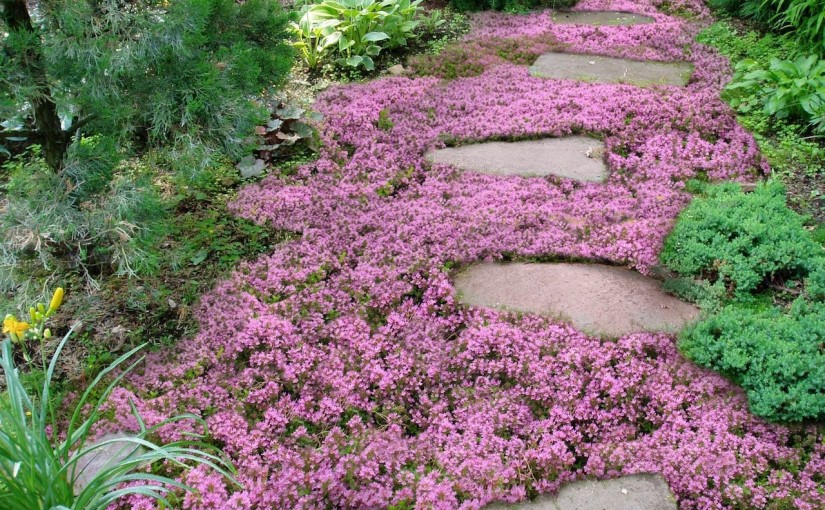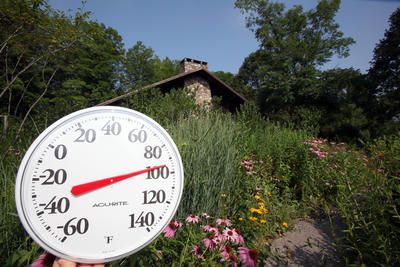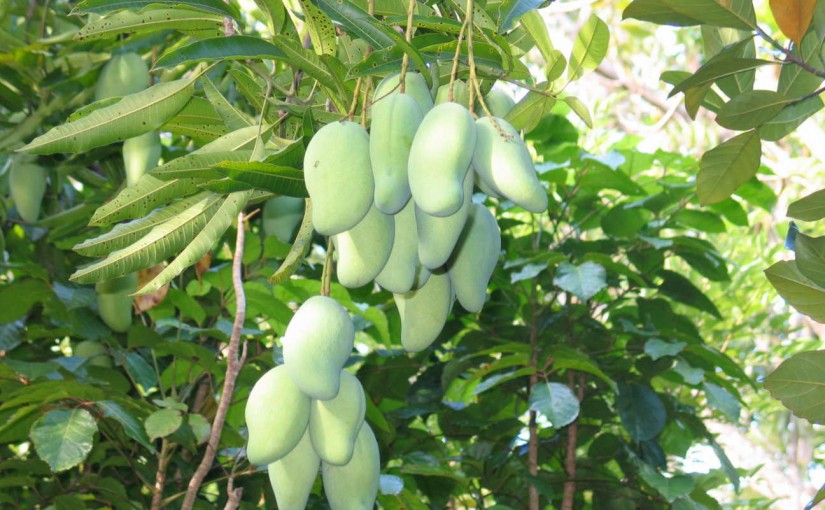When you’re searching for planting season Arizona for vegetables like cucumbers, tomatoes, garlic, cantaloupe, cilantro or any other type of fruit or vegetable A&P Nursery can help! Our plant nurseries in Mesa, Gilbert, and Queen Creek are staffed with knowledgeable gardening expects who understand the unique challenges we face in the Phoenix Valley.
Arizona Spring Planting Season
“The secret to growing vegetables and fruit in Mesa, Arizona is knowing your planting seasons“, here’s a spring planting season guide to help you out!
Timing is one of the biggest mistakes new gardeners in Arizona make. The seasons in Arizona are much different than those in (Wisconsin for example, their spring season is more like autumn in AZ).
New gardeners in Mesa Arizona tend to make the mistake of planting the wrong vegetable at the wrong time.
Everyone has their own vision of a victory garden but growing vegetables in the Arizona desert can be a tough task for those who forget about Arizona’s planting cycle.
For example: gardeners in other states usually plant tomatoes in May, for Arizona, this could be the worst mistake you make. Your tomatoes will surely be dead by July due to Arizona’s 110+ heat in the summer. The Midwest planting cycle doesn’t work for the desert.
Vegetable Planting Calendar Guide for Arizona
Here’s a list of common vegetables and the best time to get them in the ground.
 Vegetables to Plant in February – Parsley, Fennel, Dill, Cilantro, Spinach, Rutabaga, Radishes, Potatoes, Peas (snap, shell, snow), Lettuce, Collards, Chard, Carrots, Bok Choy and Beets.
Vegetables to Plant in February – Parsley, Fennel, Dill, Cilantro, Spinach, Rutabaga, Radishes, Potatoes, Peas (snap, shell, snow), Lettuce, Collards, Chard, Carrots, Bok Choy and Beets.
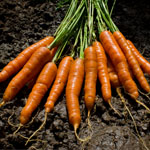 Vegetables to Plant in March – Dill, Cilantro, Watermelon, Spinach, Radishes, Peanuts, Melons, Corn, Carrots, Beets, Beans (snap).
Vegetables to Plant in March – Dill, Cilantro, Watermelon, Spinach, Radishes, Peanuts, Melons, Corn, Carrots, Beets, Beans (snap).
 Vegetables to Plant in April – Dill, Cilantro, Watermelon, Summer Squash, Spinach, Scallions, Radishes, Peas (southern), Peanuts, Okra, Melons, Cucumbers, corn, Carrots, Cantaloupe, Beans (snap).
Vegetables to Plant in April – Dill, Cilantro, Watermelon, Summer Squash, Spinach, Scallions, Radishes, Peas (southern), Peanuts, Okra, Melons, Cucumbers, corn, Carrots, Cantaloupe, Beans (snap).
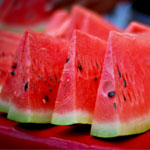 Vegetables to Plant in May – Cilantro, Watermelon, Scallions, Radishes, Peas (southern), Peanuts, Okra, Melons, Gourds, Cucumber, Corn, Cantaloupe, Beans (snap).
Vegetables to Plant in May – Cilantro, Watermelon, Scallions, Radishes, Peas (southern), Peanuts, Okra, Melons, Gourds, Cucumber, Corn, Cantaloupe, Beans (snap).
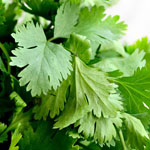 Vegetables to Plant in June – Cilantro, Watermelon, Peas (southern), Peanuts, Okra, Melons, Gourds, Cucumber, Corn, Cantaloupe, Beans.
Vegetables to Plant in June – Cilantro, Watermelon, Peas (southern), Peanuts, Okra, Melons, Gourds, Cucumber, Corn, Cantaloupe, Beans.
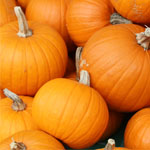 Vegetables to Plant in July – Dill, Cilantro, Basil, Squash (summer and winter), Pumpkin, Peas (southern), Melons, Cucumber, Corn, Cantaloupe, Beans.
Vegetables to Plant in July – Dill, Cilantro, Basil, Squash (summer and winter), Pumpkin, Peas (southern), Melons, Cucumber, Corn, Cantaloupe, Beans.
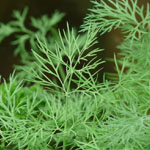 Vegetables to Plant in August – Dill, Cilantro, Basil, Turnip, Spinach, Rutabaga, Radish, Peas, Onions, Mustard, Lettuce, Kohlrabi, Kale, Cucumbers, Corn, Collards, Chinese Cabbage, Chard, Carrots, Beets, Bean (bush and snap).
Vegetables to Plant in August – Dill, Cilantro, Basil, Turnip, Spinach, Rutabaga, Radish, Peas, Onions, Mustard, Lettuce, Kohlrabi, Kale, Cucumbers, Corn, Collards, Chinese Cabbage, Chard, Carrots, Beets, Bean (bush and snap).
 Vegetables to Plant in September – Parsley, Dill, Cilantro, Turnip, Spinach, Rutabaga, Radish, Peas, Parsnip, Onions, Mustard, Lettuce, Leeks, Kohlrabi, Kale, Escarole/Endive, Collards, Chinese Cabbage, Chard, Carrots, Pac Choi, Bok Choy, Beet, Arugula.
Vegetables to Plant in September – Parsley, Dill, Cilantro, Turnip, Spinach, Rutabaga, Radish, Peas, Parsnip, Onions, Mustard, Lettuce, Leeks, Kohlrabi, Kale, Escarole/Endive, Collards, Chinese Cabbage, Chard, Carrots, Pac Choi, Bok Choy, Beet, Arugula.
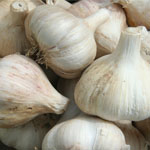 Vegetables to Plant in October – Spinach, Shallots, Onions, Mache, Garlic, Arugula.
Vegetables to Plant in October – Spinach, Shallots, Onions, Mache, Garlic, Arugula.
Here’s 10 Tips for Gardening In Mesa, Arizona’s Spring Planting Season Guide
Know your Timing & Planting Seasons
Fall and Spring are Mesa Arizona’s 2 distinct growing seasons. Both seasons have specific vegetables that grown best in warmer or colder temperatures.
Gardeners from the Midwest or East part of the US should try to think of Arizona summers as winter time. This is not the time to sow seeds. Summer is by far the harshest season in Mesa. But unlike other parts of the US, vegetables can grow in the summer in AZ in you plant early enough in the spring and chose the right type of warmer-weather vegetables.
Go to https://apnursery.com/blog/garden-planting-schedule/ for when and what to plant.
1. Location, Location, Location
Location matters in vegetable growing just like location matters in real estate. Make sure and pick the right spots for growing, too much shade will keep from growing and too much sun can kill your vegetables.
2. Adequate Sunlight
Vegetable plants need at least 6-8 hrs of sunlight every day. It’s easy to have too much sunlight than it is to have too much shade. You can always purchase shade close which is very inexpensive but you can’t buy sunlight so make sure and plant your vegetables in a place where they can get the 6-8 hours of light they need and if it’s too much, add the shade cloth.
3. Bed Size
Start small. Even the most experienced gardeners can become frustrated when raising vegetables in Arizona. They take a while to get accustomed to the demands and rhythms of the Desert climate.
Start with a 4X4 raised bed. Many local plant and garden nurseries sell readymade beds. You can also construct one yourself. Other gardeners recommend digging garden beds instead of raised ones because your are using the natural soil and will avoid build-up of salt typically associated with raised beds.
4. Soil Types
Arizona soil has lots of miners but almost no organic matter. Most gardeners in AZ recommend a blend of 50-50 mixture of compost and native AZ soil. Local plant nurseries sell compost mixtures. IF you are digging your own garden, water the spot first to soften the soil and then add in your compost material.
5. Watering
Most vegetables need to be watered at least one foot deep. A good way to check the water depth is by using a screw driver. You may think your plants need more water than they do due to the dry climate but this can be just as harmful as under watering them. Plants with too much water lose oxygen. Giving them too much water can cause diseases to your vegetable and surrounding plants.
6. Master Gardener Hotline
Keep this number in your contact list: 602-827-8200, ext. 301. This master gardener hotline is operated by master gardeners who are volunteers and it may take up to 48 hours to get a response from them.
7. Selecting Plants
Pay attention to the variety of plants you are choosing and if they are appropriate for the current season in which you are growing in. Dont plant tomatoes too late in the spring season because they take at least 90 days to produce fruit. You would be harvesting your tomatoes in 110+ heat. If you plan on planting in March, make sure and choose varieties of tomatoes that take 45-60 days to harvest.
8. Harvest Time Pacing
Due to the 2 growing seasons in Arizona, you can pace their harvest time.
It may be getting too late to plant lettuce in August, you can plant every two weeks to ensure you will have a continual harvest in the spring season.
9. Yield And Scale
Use plants that don’t take up a lot of space, unless your family likes watermelons of course. Expecially do this if you are starting a small garden. You can also space out your planting so that you and your family will have a continuous harvest of the fruit or vegetable of your liking.
Thank you for visiting, we hope you enjoyed out top 10 Tips for Gardening In Mesa, Arizona’s Spring Planting Season Guide.
Nursery & Gardening Supplies
If you’re thinking about starting a new garden or want to improve one you’ve already started A&P Nursery can help! Let our team help you select the best plants and seeds to get your garden thriving. Whether you are looking for purely display type plants or want to grow your own produce, we can help!
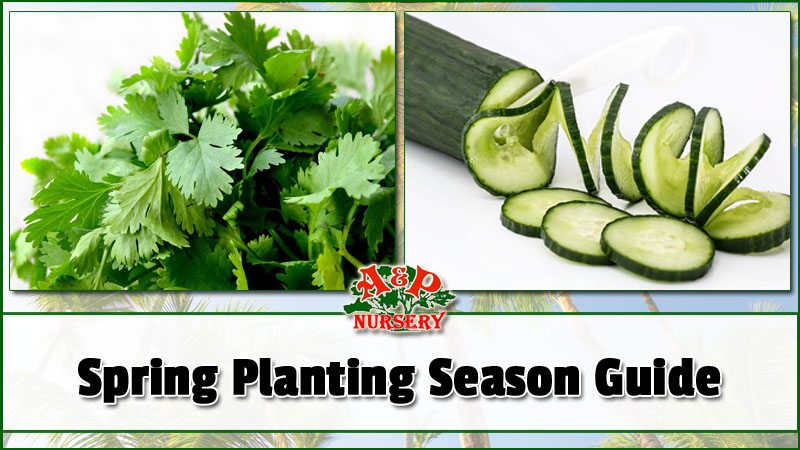

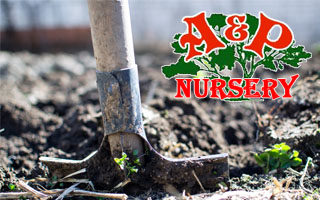






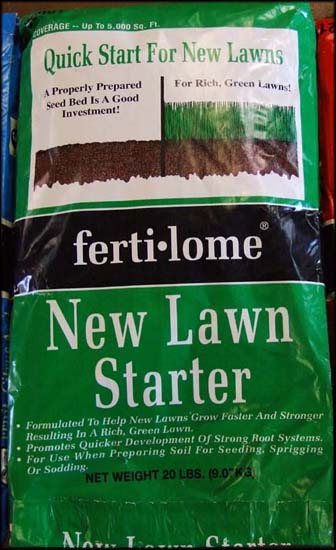
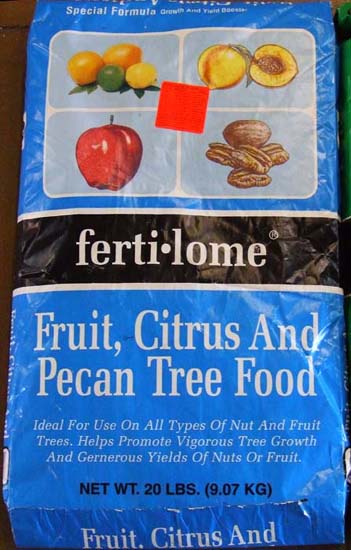



 What does it take to vegetable garden in Arizona? – Gardening in Arizona can present unique challenges whether you are growing a garden for aesthetic purposes or one that produces vegetables and fruits. The intense desert climate in Arizona only lends itself to certain plant species that can flourish in the unique and dry climate. This article is going to focus on vegetable bearing gardens and how to maximize their potential if you happen to live in the desert Southwest.
What does it take to vegetable garden in Arizona? – Gardening in Arizona can present unique challenges whether you are growing a garden for aesthetic purposes or one that produces vegetables and fruits. The intense desert climate in Arizona only lends itself to certain plant species that can flourish in the unique and dry climate. This article is going to focus on vegetable bearing gardens and how to maximize their potential if you happen to live in the desert Southwest. What’s the best location for my vegetable garden in Arizona? – The first factors you need to consider are going to be the basics that will apply to gardening no matter where you are located on the planet; soil quality, water, sun exposure, timing. Making sure you have an adequate plan and location that will fully facilitate your garden’s anticipated needs is going to have the most influence on the potential success of your garden and the extent that the success can be maximized. Scout your property and pay close attention to the lay of the land and its surroundings. If you can’t find a plot with enough sun exposure, you may need to plant or remove a tree or two and also place or remove any objects you may want that can assist in the proper amount of sunlight reaching the hungry plants in your garden. Vegetables need at least 6 hours of sunlight; they also need adequate time in the shade as the AZ sun can be quite harsh on overexposed plants.
What’s the best location for my vegetable garden in Arizona? – The first factors you need to consider are going to be the basics that will apply to gardening no matter where you are located on the planet; soil quality, water, sun exposure, timing. Making sure you have an adequate plan and location that will fully facilitate your garden’s anticipated needs is going to have the most influence on the potential success of your garden and the extent that the success can be maximized. Scout your property and pay close attention to the lay of the land and its surroundings. If you can’t find a plot with enough sun exposure, you may need to plant or remove a tree or two and also place or remove any objects you may want that can assist in the proper amount of sunlight reaching the hungry plants in your garden. Vegetables need at least 6 hours of sunlight; they also need adequate time in the shade as the AZ sun can be quite harsh on overexposed plants.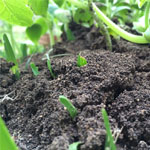 Which soil type is best for growing vegetables in Arizona? The vast majority of Mesa plants absolutely love gardening loam. Loam is a soil classification that means that the soil is a balance clay and sandy soil. This gives you the benefits of both and alleviates the drawbacks.
Which soil type is best for growing vegetables in Arizona? The vast majority of Mesa plants absolutely love gardening loam. Loam is a soil classification that means that the soil is a balance clay and sandy soil. This gives you the benefits of both and alleviates the drawbacks.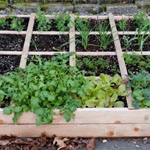 What’s the best size of vegetable garden to start with? – The size of your garden is a factor that you need to decide early on as well. Starting small is best for most people because a smaller garden is much easier to manage. Starting smaller affords you the opportunity to know how much time and effort goes into even a small amount of plants, which will let you know how big of a garden you can actually attend to adequately.
What’s the best size of vegetable garden to start with? – The size of your garden is a factor that you need to decide early on as well. Starting small is best for most people because a smaller garden is much easier to manage. Starting smaller affords you the opportunity to know how much time and effort goes into even a small amount of plants, which will let you know how big of a garden you can actually attend to adequately.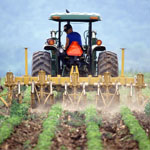 How do I prepare the ground for my Mesa vegetable garden? – Once you find the right plot for your garden you may have some work to do to properly prep it for planting. Sod may be on the plot you select and will need to be removed in order to be able to till the soil. Once you have removed the sod and tilled the soil, you can add organic compost, manure and planting soil before tilling a final time before starting the planting process.
How do I prepare the ground for my Mesa vegetable garden? – Once you find the right plot for your garden you may have some work to do to properly prep it for planting. Sod may be on the plot you select and will need to be removed in order to be able to till the soil. Once you have removed the sod and tilled the soil, you can add organic compost, manure and planting soil before tilling a final time before starting the planting process.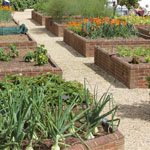 How do I control soil quality and watering better? – Another way to get started with your garden is to use
How do I control soil quality and watering better? – Another way to get started with your garden is to use  What vegetables grow best in Arizona? – The next factor to consider is which vegetable bearing plants can thrive in Arizona. The crops that are easiest to grow in AZ are green beans, herbs, peppers, sugar, snap peas, tomatoes, radishes, and carrots. Sticking to these varieties initially will not only set you up for success, it will give you valuable experience that will be much needed if you plan on branching out and growing varieties that are harder to foster in AZ. The best times of year to plant the seeds for the plants species listed above is between the months of November and March. Understand that around January frost becomes more likely and you should make sure your crops are covered so they do not become damaged or even die, due to frost exposure.
What vegetables grow best in Arizona? – The next factor to consider is which vegetable bearing plants can thrive in Arizona. The crops that are easiest to grow in AZ are green beans, herbs, peppers, sugar, snap peas, tomatoes, radishes, and carrots. Sticking to these varieties initially will not only set you up for success, it will give you valuable experience that will be much needed if you plan on branching out and growing varieties that are harder to foster in AZ. The best times of year to plant the seeds for the plants species listed above is between the months of November and March. Understand that around January frost becomes more likely and you should make sure your crops are covered so they do not become damaged or even die, due to frost exposure. Can I grow two crops of vegetables in Mesa? There is a unique advantage to growing vegetables in Arizona and that is the fact that many vegetables can have double growing seasons. The fact that you can double your yearly harvests in AZ means that you potentially grow twice as much produce and that can save you money on groceries while eating fresh produce almost year round. As your green thumb becomes established, your harvests will increase and become exponentially more plentiful. This article is about vegetables, but is should be noted that the same goes for fruit and having citrus growing year round will provide a great aroma to your property as the trees bud and bear fruit.
Can I grow two crops of vegetables in Mesa? There is a unique advantage to growing vegetables in Arizona and that is the fact that many vegetables can have double growing seasons. The fact that you can double your yearly harvests in AZ means that you potentially grow twice as much produce and that can save you money on groceries while eating fresh produce almost year round. As your green thumb becomes established, your harvests will increase and become exponentially more plentiful. This article is about vegetables, but is should be noted that the same goes for fruit and having citrus growing year round will provide a great aroma to your property as the trees bud and bear fruit.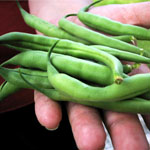 What’s the best vegetable to grow in Arizona? Green Beans are one of the best vegetables to grow in AZ. The soil in Phoenix is especially well suited to the growing of green beans. November is the recommended time of year to plant Green Bean seeds, just remember to cover the plants once frost becomes a threat. One option to avoid frost is to start the plants life indoors, moving them outside once the frost season has passed. You can also place tomato cages around your Green Bean plants in order to consolidate space in your garden. Sugar Snap peas are another vegetable that grows well in the same window. You can follow the same steps to avoid frost with Sugar Snap Peas that we mentioned using with Green Beans.
What’s the best vegetable to grow in Arizona? Green Beans are one of the best vegetables to grow in AZ. The soil in Phoenix is especially well suited to the growing of green beans. November is the recommended time of year to plant Green Bean seeds, just remember to cover the plants once frost becomes a threat. One option to avoid frost is to start the plants life indoors, moving them outside once the frost season has passed. You can also place tomato cages around your Green Bean plants in order to consolidate space in your garden. Sugar Snap peas are another vegetable that grows well in the same window. You can follow the same steps to avoid frost with Sugar Snap Peas that we mentioned using with Green Beans. Another vegetable that loves the long growing year in Arizona is Parsley. Parsley absolutely loves the Arizona climate and can thrive as much as you want it too. You may actually have to eventually limit the parsley as it can start to take over your garden. Planting in the springtime is recommended and once your plants begin to mature, you can have fresh parsley at the ready year round.
Another vegetable that loves the long growing year in Arizona is Parsley. Parsley absolutely loves the Arizona climate and can thrive as much as you want it too. You may actually have to eventually limit the parsley as it can start to take over your garden. Planting in the springtime is recommended and once your plants begin to mature, you can have fresh parsley at the ready year round. What types of seeds are best for beginners in Phoenix? For the beginner gardener it helps to have a type of seed that germinates quickly and is heartier. In Arizona, it is best to select seeds that have gestation periods of 60 days or less as they are the easiest to foster in the desert climate.
What types of seeds are best for beginners in Phoenix? For the beginner gardener it helps to have a type of seed that germinates quickly and is heartier. In Arizona, it is best to select seeds that have gestation periods of 60 days or less as they are the easiest to foster in the desert climate. What tools do I need to garden in Arizona? – Like most things in life the right tools for the job makes the job that much easier, and more fun. A good pair of gloves for the handling of prickly items, and also to offer a little protection from insects goes a long way. You’ll want a sturdy shovel for those pesky rocks and tougher soil that you might need to dig in to plant items with deeper root system, such as trees. Having a garden spade makes maintaining edges around flower beds and the preparation for installing raised garden beds much easier than using a rounded shovel edge.
What tools do I need to garden in Arizona? – Like most things in life the right tools for the job makes the job that much easier, and more fun. A good pair of gloves for the handling of prickly items, and also to offer a little protection from insects goes a long way. You’ll want a sturdy shovel for those pesky rocks and tougher soil that you might need to dig in to plant items with deeper root system, such as trees. Having a garden spade makes maintaining edges around flower beds and the preparation for installing raised garden beds much easier than using a rounded shovel edge. How do I water my vegetable Garden in Arizona? – Depending on the type of garden you plant and which vegetables you choose you will need different watering systems. But having an automated system makes it that much easier for the passionate gardener. You can get drip lines that put the water directly on the ground next to your vegetables instead of sprinklers, which are best suited for water lawns.
How do I water my vegetable Garden in Arizona? – Depending on the type of garden you plant and which vegetables you choose you will need different watering systems. But having an automated system makes it that much easier for the passionate gardener. You can get drip lines that put the water directly on the ground next to your vegetables instead of sprinklers, which are best suited for water lawns.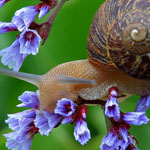 How do I keep pests away from your vegetable garden? – There are various kinds of pests you can encounter here in Arizona. Some will need professional removal, such as venomous snakes or scorpions. Contact a licensed professional that has the training and right equipment to remove such pests. For the rest of the insects and foraging animals you can use chicken wire or other types of fencing to keep them out. As for insects there are different kinds of sprays available at your local gardening shop.
How do I keep pests away from your vegetable garden? – There are various kinds of pests you can encounter here in Arizona. Some will need professional removal, such as venomous snakes or scorpions. Contact a licensed professional that has the training and right equipment to remove such pests. For the rest of the insects and foraging animals you can use chicken wire or other types of fencing to keep them out. As for insects there are different kinds of sprays available at your local gardening shop.

